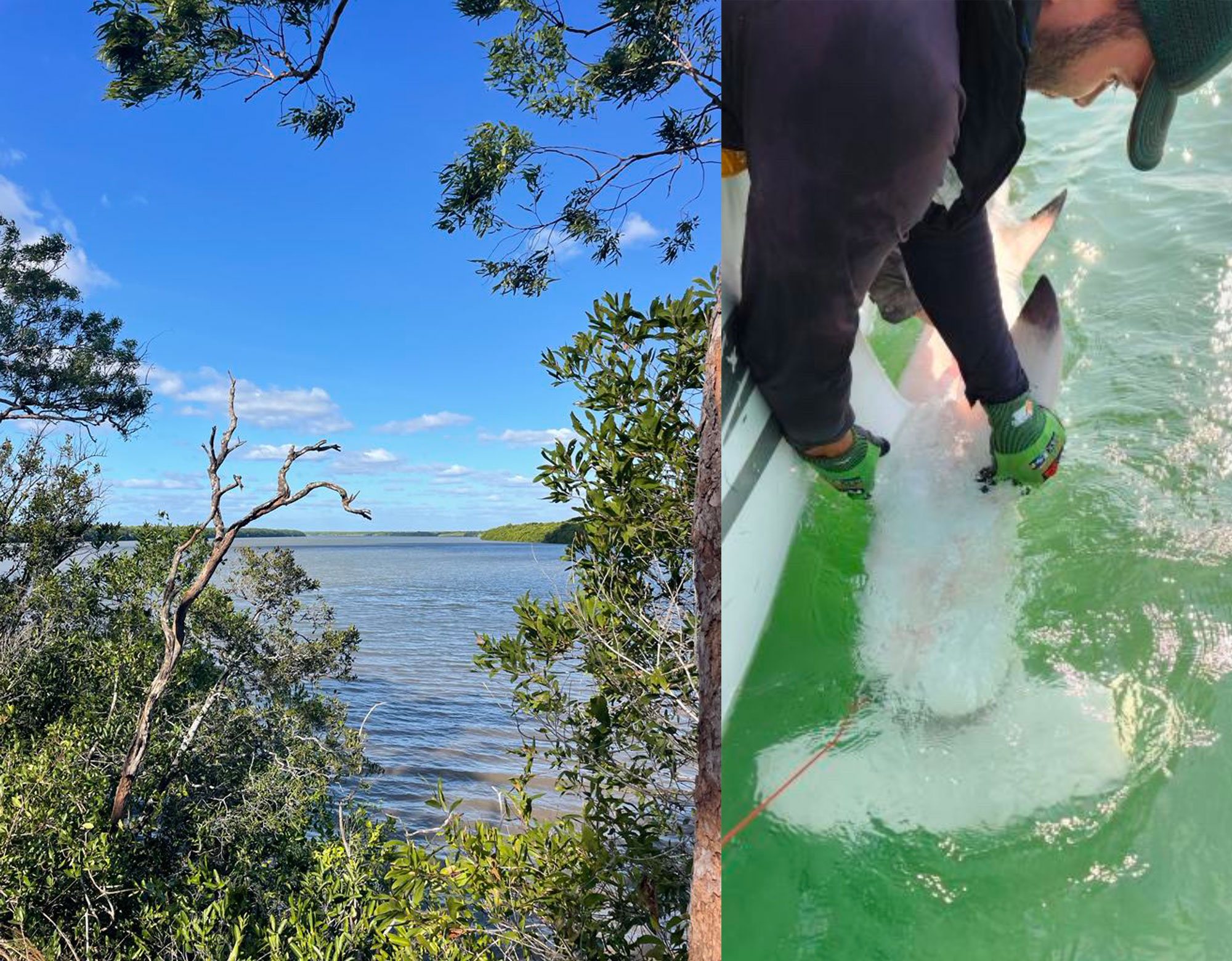Hammerheads as river monsters?
Throughout the first year of our journey to uncover the secret lives of hammerheads and what habitats are crucial to their survival, we have made many interesting discoveries; one of which surprised all of us. On the western side of Cape York, Australia lays Port Musgrave, a beautiful mangrove-lined estuary that is fed by two major rivers, the Wenlock River and the Ducie River. The former of which, has the highest diversity of freshwater species of any river in Australia and is known for its population of saltwater crocodiles. Many rare and endangered sharks and rays including the spear tooth shark and four different species of sawfish also occur here.
As part of another project we are currently working on, we set out to monitor these rare species and help with their conservation. However, we gradually realised that the rivers of this area are special in another way: In systems like the Wenlock, the Ducie and the Embley River, we kept catching very large individuals of yet another endangered species: The great hammerhead shark. Even at the end of the wet season when the mouths of these rivers can still have a large freshwater influence, we encountered them regularly. Who would have thought that a species, believed to be exclusively a marine species, occurs in rivers? In fact, we have now caught over 25 great hammerheads, some 350 cm in length, up to 20 km upstream in the rivers. It is truly bizarre to be leaning over the side of the boat to attach a tracking device to a hammerhead, while a crocodile swims past you to check out what is going on!
All of these animals have also been equipped with tracking devices, and we are seeing their repeated movements up and down the Wenlock and Ducie Rivers. Interestingly, most of the hammerheads disappear from the area to go further offshore into salty, marine waters during the peak of the Australian wet season, when heavy monsoons flush through the rivers and pump excessive amounts of freshwater into the estuaries.

Can you imagine catching hammerhead sharks in a river? This is a section of the Wenlock River where we repeatedly see great hammerheads (like this one here on the right). Photo © Nicolas Lubitz (left) and Ross Dwyer (right)
The big question is now: Why do they do it? What makes these large marine predators venture kilometres up into narrow sections of brackish and possibly even fresh water? We obviously have our suspicions, and we believe this may occur here specifically because of the high, seasonal availability of food. Great hammerheads love to eat stingrays and smaller sharks and from what we can tell, there are plenty of those in the Wenlock River and Port Musgrave. Maybe these tropical rivers are a big buffet for our hammerheads. But to really answer this question conclusively and to determine if the Port Musgrave area is unique in terms of endangered hammerheads entering rivers or if this happens elsewhere without us having noticed it yet, we continue our research as part of this Save Our Seas Keystone project.
